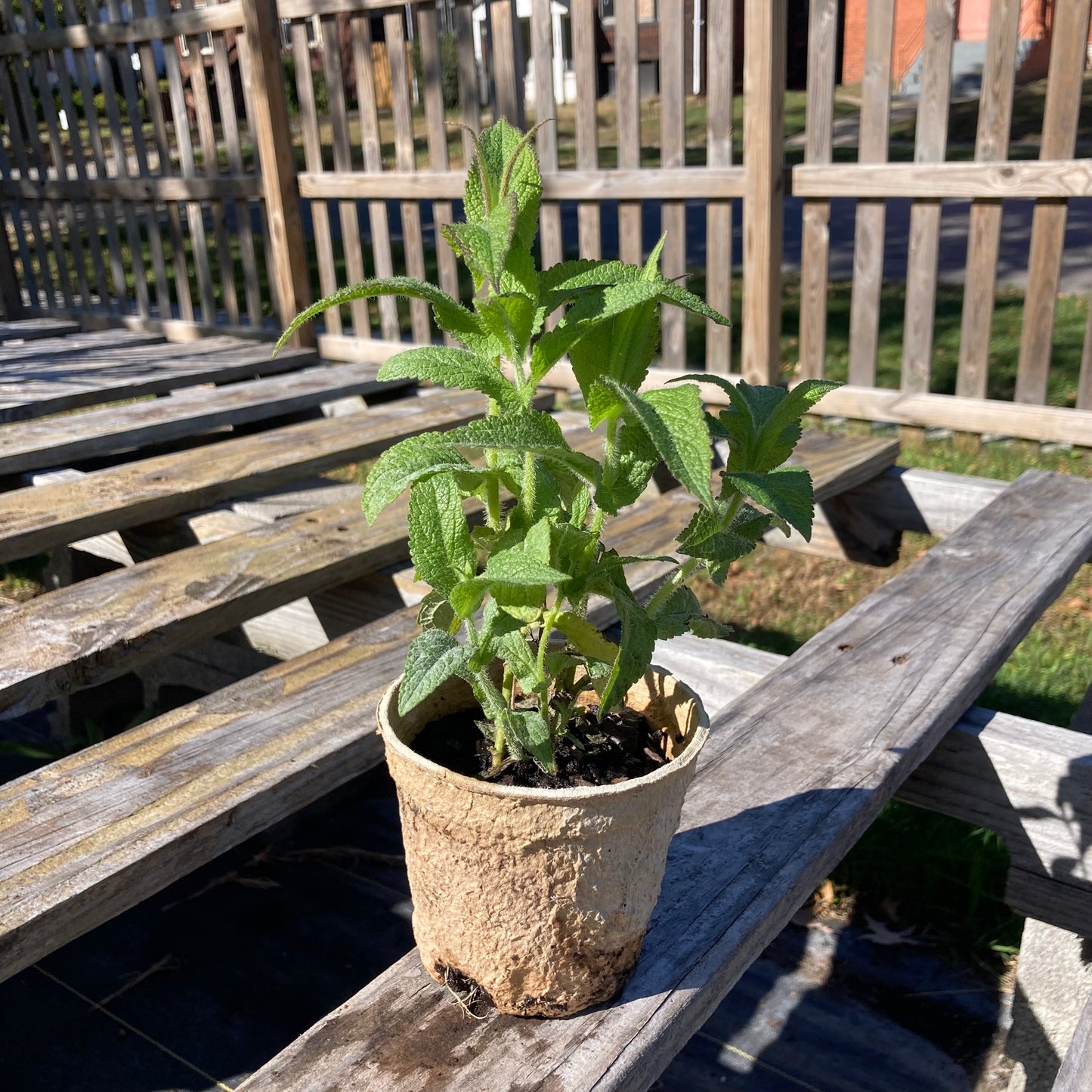Common boneset
Eupatorium perfoliatum
Eupatorium perfoliatum
59 remaining
Couldn't load pickup availability
Sun/shade: Full sun to part shade
Soil moisture: Medium to wet
Height: 4'
Flowering period: August
Deer resistance: High
Common boneset’s leaves form a graceful series of crisscrossing arches along the plant’s stem. Opposing leaf bases are fused, creating a striking architectural effect. In August, common boneset’s fragrant white blooms are a nutritional resource for numerous pollinators, especially short-tongued bees, flies, and wasps*. Bonesets are also renowned as favorite nectar plants for monarch butterflies.
In the garden, common boneset spreads via short rhizomes to form a tight colony of plants that develop flat-topped clusters of white flowers. It creates a tidy white patch and makes a fine complement to grass-leaved goldenrod and tall ironweed. It can spread aggressively via seed, so it may be a good idea to cut off the faded flowers before the seed develops. A well mulched garden bed will also discourage seed germination.
Native to NE Ohio wet meadows and the margins of water bodies, common boneset thrives in sunny, damp places, and can handle brief periods of standing water. The plant will tolerate light shade and will also do well in soils of moderate moisture, which is the typical condition of most yards. During summer dry spells, common boneset may need some supplemental watering, and if the plant gets too dry, its leaves may brown. Bonesets are highly resistant to deer browse and are great options for gardens that experience high deer pressure.
*Wasps do not behave aggressively towards humans when foraging for nectar. Instances of aggression are primarily limited to certain wasps (social wasps) that are defending their nest against a perceived threat.
Photo by Julie Slater.



